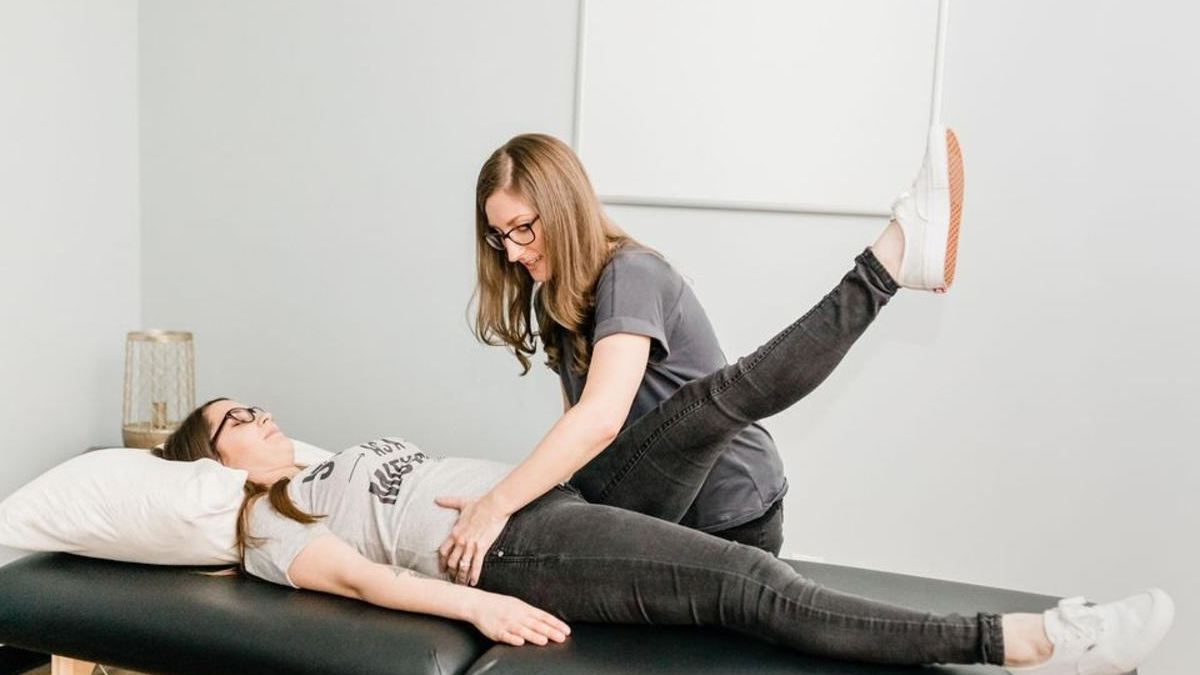There’s a lot you can do to prepare your pelvic floor for pregnancy and giving birth. Body Works Women’s Health & Wellness can help you get ready for the experience of having a baby and the risks you might face.
“They gain more confidence, they feel more comfortable and they have a peace of mind,” said Ashlee De Nooy of how patients feel after preparing for labor at Body Works. “They’re ready.”
Patients often visit Body Works after the first trimester of their pregnancy, at around 12 weeks, while some come earlier to prepare for being pregnant in the near future.
All patients, especially those who are pregnant, are checked for diastasis recti – the stretching of the outermost muscles of the abdomen, which most pregnant women develop by around 35 to 36 weeks. Exercises and therapies are recommended to help prevent tearing of tissue and to prepare stretched muscles for healing. Evaluating how patient breathes, the angle of her ribs, the condition of the linea alba – the connective tissue running down the front of the abdomen – and back and pelvis stability can tell what work will be best.
“All of your programs are individualized,” said De Nooy, owner and founder of Body Works. “It’s not a one-size-fits-all.”
Body Works customizes goals and subsequent activities to the patient’s pelvic condition. A gentle, nonpainful assessment of pelvic health investigates the skin and sensation of the pelvic region, and the muscle tone, strength, endurance and coordination of the three layers of pelvic floor muscles are examined. With the patient’s unique body in mind, the Body Works team prescribes exercises, therapies and programming.
For support before, during and after pregnancy, those expecting can expect excellent preparation from the Birth Ready program.
After the patient’s initial evaluation, the program includes three follow-up visits, a postpartum evaluation, an online course and postpartum movement guide. Patients with pelvic issues might be seen more frequently. Program exercises tie into their daily routines and are supplemented with physical therapy and therapies during their appointments.
The package of appointments and educational materials trains diaphragmatic breathing, re-educates posture and enhances hip and core stabilization – and also equips patients and their support people with labor tips and tricks.
“As they progress, we’ll start talking more about labor and delivery positions that are going to be optimal for mom,” said De Nooy.
Techniques designed specifically for their bodies and conditions are recommended, along with preparations for the perineum – like how to push to reduce the risk of tearing. Body Works invites partners or doulas to be involved in the experience and in helping mom during labor.
De Nooy strongly urges postpartum patients to be diligent with their follow-up work.
“It’s not just for women who are having issues. It’s for every woman that has had a baby,” said De Nooy in explaining who should be doing pelvic floor physical therapy after giving birth.
Work can be done to prevent prolapse, urinary incontinence and the need for surgeries later on.
To learn more about how to prepare your body for pregnancy or how to strengthen your general pelvic health, visit bodyworks-physicaltherapy.com.
By Molly Sherman

